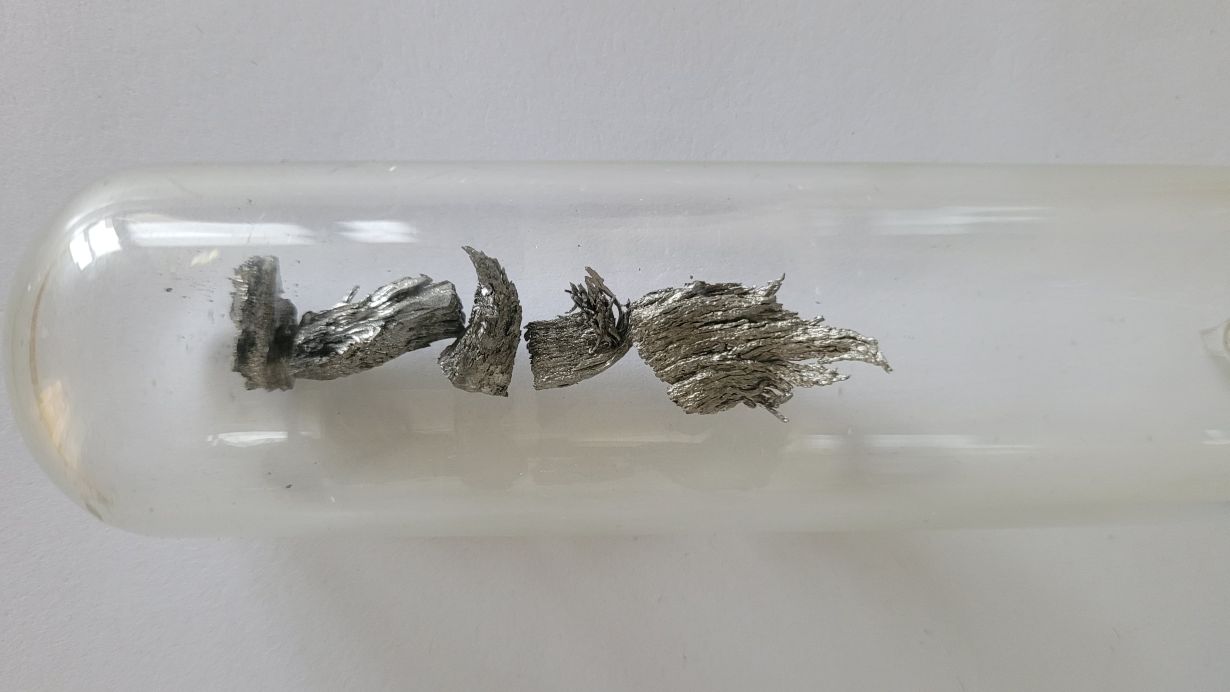
Complex materials based on rare earths are applied in many high technologies, such as permanent magnets or screens. Chemistry of molecular and nanoscaled rare earth compounds and their physical properties are now in the focus of the new Collaborative Research Center "4f for Future." The CRC is coordinated by Karlsruhe Institute of Technology (KIT). The partners are University of Marburg, LMU Munich, and University of Tübingen. As of January 1, 2023, the Collaborative Research Center will be funded by the German Research Foundation (DFG) with more than EUR 10 million for a duration of four years.
Materials based on rare earth metals and their compounds are of crucial importance to our modern high-tech society. Surprisingly, molecular chemistry of these elements is poorly developed. However, recent progress in this area has shown that this is going to change. In the past years, dynamic developments in the chemistry and physics of molecular rare earth compounds have shifted borders and paradigms that existed for decades.
Materials with Unprecedented Properties
"With our joint research initiative "4f for Future", we want to establish a world-leading center that picks up these new developments and advances them to the extent possible," says CRC spokesman Professor Peter Roesky from KIT's Institute for Inorganic Chemistry. The researchers will study synthesis paths and physical properties of new molecular and nanoscaled rare earth compounds in order to develop materials with unprecedented optical and magnetic properties.
Their research is aimed at extending knowledge of the chemistry of molecular and nanoscaled rare earth compounds and at improving the understanding of physical properties for new applications. The CRC will combine the expertise of KIT researchers in the chemistry and physics of molecular rare earth compounds with the know-how of researchers from the universities of Marburg, LMU Munich, and Tübingen.
CRC/Transregio on Particle Physics Enters Second Funding Phase
Apart from the new CRC, DFG has decided to continue funding of the CRC/Transregio "Particle Physics Phenomenology after the Higgs Discovery" (TRR 257) for another four years. Work of researchers from KIT (coordinating university), RWTH Aachen University, and the University of Siegen is aimed at enhancing the understanding of fundamental concepts underlying the so-called standard model of particle physics that describes the interactions of all elementary particles in a mathematically conclusive way. Ten years ago, this model was confirmed experimentally by the detection of the Higgs boson. However, the standard model cannot answer questions relating to the nature of dark matter, the asymmetry between matter and antimatter, or the reason why neutrino masses are so small. Within TRR 257, synergies are being created to pursue complementary approaches to the search for a more comprehensive theory that extends the standard model. For example, flavor physics is connected with the phenomenology at high-energy accelerators in the search for "new physics" beyond the standard model.
CRC/Transregio on Multi-phase Flows Extended by Another Four Years
In addition, DFG has decided to continue funding of the CRC/Transregio "Turbulent, chemically reactive, multi-phase flows near walls" (TRR 150) in a third funding phase. Such flows are encountered in a variety of processes in nature and engineering. Examples are forest fires and energy conversion processes, whose heat, momentum, and mass transfer as well as chemical reactions are influenced by fluid/wall interaction. Understanding of these mechanisms and development of technologies based on them are the goals of the CRC/Transregio carried out by TU Darmstadt and KIT. For this purpose, experiments, theory, modeling, and numerical simulation are used synergetically. The research groups from KIT mainly study chemical processes to prevent fires and to reduce emissions damaging the climate and environment.
Collaborative research centers are research alliances scheduled for a long term of up to 12 years, in which researchers collaborate across disciplines. CRCs focus on innovative, challenging, complex, and long-term research.
Press Release by DFG:
https://www.dfg.de/en/service/press/press_releases/2022/press_release_no_49/index.html
Being "The Research University in the Helmholtz Association", KIT creates and imparts knowledge for the society and the environment. It is the objective to make significant contributions to the global challenges in the fields of energy, mobility, and information. For this, about 9,800 employees cooperate in a broad range of disciplines in natural sciences, engineering sciences, economics, and the humanities and social sciences. KIT prepares its 22,300 students for responsible tasks in society, industry, and science by offering research-based study programs. Innovation efforts at KIT build a bridge between important scientific findings and their application for the benefit of society, economic prosperity, and the preservation of our natural basis of life. KIT is one of the German universities of excellence.






